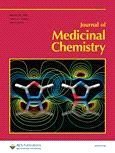Rejman D, Rabatinová A, Pombinho AR, Kovačková S, Pohl R, Zborníková E, Kolář M, Bogdanová K, Nyč O, Sanderová H, Látal T, Bartůněk P, Krásný L. J Med Chem. 2011 Nov 24;54(22):7884–98. Epub 2011 Nov 1. IF: 5.207

Department of Medical Microbiology
Abstract
Novel compounds termed lipophosphonoxins were prepared using a simple and efficient synthetic approach. The general structure of lipophosphonoxins consists of four modules: (i) a nucleoside module, (ii) an iminosugar module, (iii) a hydrophobic module (lipophilic alkyl chain), and (iv) a phosphonate linker module that holds together modules i–iii. Lipophosphonoxins displayed significant antibacterial properties against a panel of Gram-positive species, including multiresistant strains. The minimum inhibitory concentration (MIC) values of the best inhibitors were in the 1–12 μg/mL range, while their cytotoxic concentrations against human cell lines were significantly above this range. The modular nature of this artificial scaffold offers a large number of possibilities for further modifications/exploitation of these compounds.
-mk-